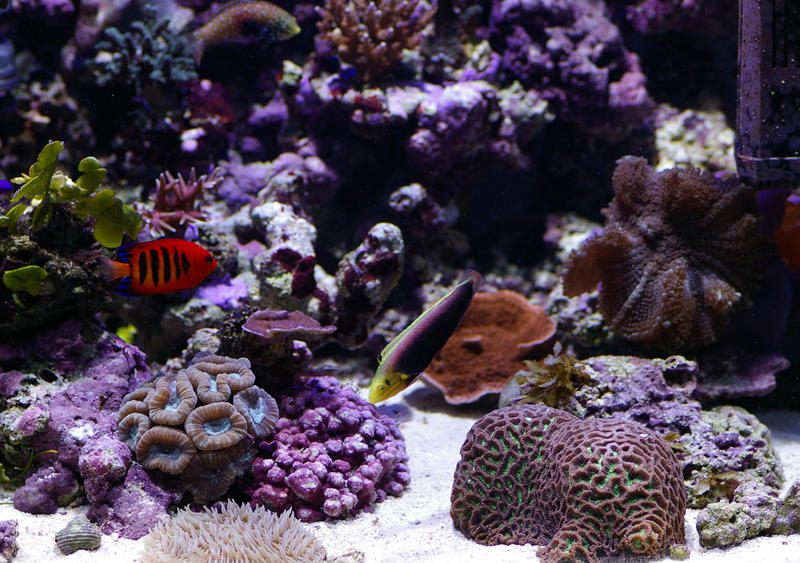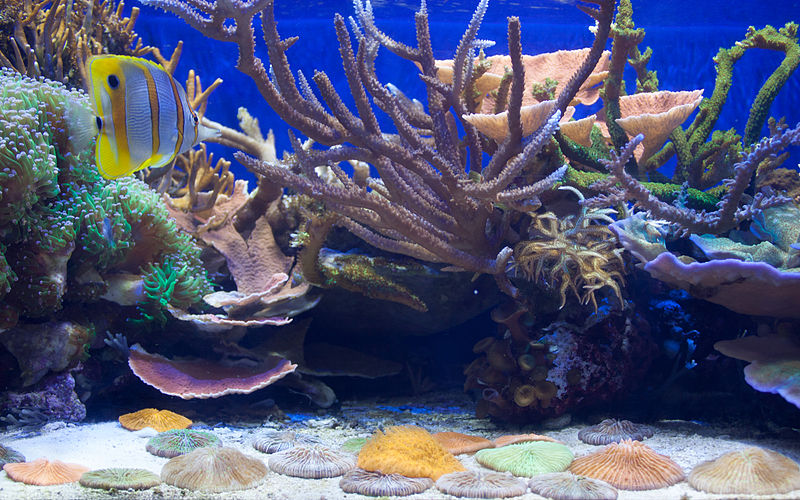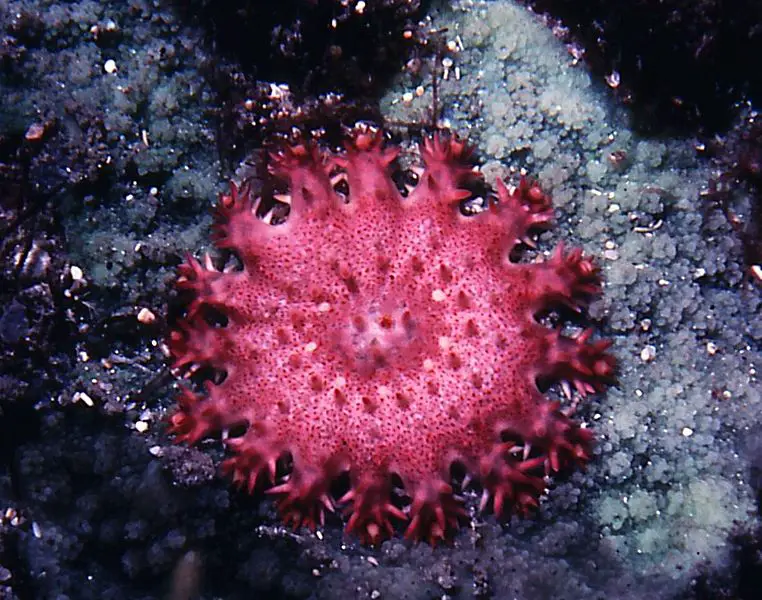How do I maintain water quality in my coral tank? Essential Tips and Tricks

Maintaining optimal water quality is crucial for the health and vibrancy of a coral tank, also known as a reef aquarium. These intricate ecosystems house a variety of marine life, including delicate corals, which require specific water parameters to thrive. By prioritizing regular maintenance, such as water changes and temperature regulation, you can create an ideal environment for these sensitive creatures. This article serves as a comprehensive guide, offering essential tips and tricks for ensuring water quality in your coral tank, allowing you to provide the best care for your aquatic inhabitants.
Maintaining water quality in a coral tank is crucial for the health and well-being of its inhabitants. Coral tanks, also known as reef aquariums, are complex ecosystems that require specific water parameters to keep the corals and other marine life thriving. Regular maintenance, including water changes and ensuring proper temperature, is necessary to create the ideal environment for these sensitive creatures.
Water quality is greatly influenced by factors such as temperature, pH, and nutrient levels. Maintaining an optimal temperature of around 77°F is essential for a healthy saltwater reef aquarium, as it promotes coral growth and coloration. Additionally, maintaining a pH between 8.1 and 8.4 helps ensure that the other chemical processes within the tank occur smoothly. Regular water testing and adjustments are vital in achieving an ideal balance between these parameters, contributing to the overall success of the coral tank’s ecosystem.
Water Quality Fundamentals
Maintaining water quality is crucial for the health and growth of corals in a reef tank. This section will cover the essential water parameters, as well as methods for testing water quality in a coral tank.
Water Parameters
The key water parameters to maintain in a coral tank include:
- Salinity: The ideal salinity for a coral tank is around 1.025 specific gravity or 34-36 parts per thousand.
- pH: Corals thrive in water with a pH between 8.0 and 8.4.
- Ammonia: A healthy tank should have undetectable amounts of ammonia, as it is toxic to corals.
- Nitrite: Similarly, nitrite should be undetectable, as it can also harm corals.
- Nitrate: Ideally, nitrate levels should be below 10 ppm.
- Alkalinity: Coral growth well-being benefits from an alkalinity between 8 and 12 dKH.
Monitoring and maintaining these parameters helps ensure the corals remain healthy and prevents any potential issues in the reef tank.
Testing Water Quality
Regularly testing water quality is vital for maintaining proper water parameters in the coral tank. Here are some steps to follow:
- Invest in test kits or equipment for measuring salinity, pH, ammonia, nitrite, nitrate, and alkalinity.
- Test the water weekly or as advised by the manufacturer of the test kits.
- Record the results to track any trends or changes in the tank.
- Perform any necessary adjustments or interventions to maintain optimal water parameters.
One of the most effective ways to maintain water quality is through partial water changes. Water changes help reduce harmful elements like phosphate and nitrate, making it harder for algae to grow and promoting a healthier environment for corals.
Achieving Optimal Water Parameters
Maintaining water quality in a coral tank involves monitoring and controlling various parameters. To achieve optimal water conditions, you should focus on regular water changes, effective filtration systems, and advanced water purification using reverse osmosis deionization.
Water Changes
Conducting regular water changes is crucial in maintaining proper water parameters in a coral reef tank. This practice removes harmful substances, excess nutrients, and waste products from the ecosystem. Experts recommend changing 10% to 20% of tank water every 1-2 weeks, depending on the aquarium’s size and bioload.
During water changes, ensure to use a high-quality water conditioner to treat tap water, removing harmful substances like chlorine and chloramines. You may also use premixed saltwater from a reputable supplier to guarantee proper salinity levels and safety for your coral tank inhabitants.
Filtration Systems
Effective filtration systems play a vital role in ensuring a healthy coral reef environment. A robust filtration system should consist of mechanical, chemical, and biological processes to remove solid particles, dissolved chemicals, and convert harmful substances into less toxic ones, respectively. For coral tanks, a popular choice is the combination of a protein skimmer, which eliminates organic waste, and a refugium containing plants like macroalgae that help control nutrients and provide habitat for beneficial organisms.
It’s essential to regularly clean and maintain filtration systems to optimize their performance, ensuring that pollutants don’t accumulate and cause fluctuations in key water parameters like temperature, pH, ammonia, and nitrate.
Reverse Osmosis Deionization
Using purified water from a reverse osmosis deionization (RO/DI) system is crucial for establishing and maintaining delicate water parameters in a coral tank. RO/DI systems remove dissolved solids, contaminants, and impurities found in tap water or even water from water treatment plants that can negatively impact coral health and growth.
Investing in an RO/DI system for your saltwater aquarium guarantees the highest possible water quality, keeping your coral tank inhabitants stress-free and thriving. Replace filters and membranes periodically to ensure the system’s efficiency and effectiveness.
Managing and Controlling Nutrients
Maintaining water quality in a coral tank involves managing and controlling nutrients, such as nitrate and phosphate. These nutrients can contribute to the growth of bacteria and algae-promoting nutrients, which can negatively affect coral health and overall tank conditions.
Sources of Nutrients
Nutrients like nitrate and phosphate typically enter a coral tank through a few common sources. These include fish food, decaying organic matter, and untreated tap water. Understanding the sources of these nutrients is crucial for effectively managing their levels in the aquarium.
Reducing and Removing Nutrients
To maintain optimal water quality in a coral tank, it is important to reduce and remove excess nutrients. There are several methods to achieve this:
- Water Changes: Regular water changes help to remove algae-promoting nutrients like phosphate and nitrate, making it harder for algae to grow. Changing the water also removes both particulate and dissolved organic matter, maintaining a healthier environment for your aquatic life (source).
- Protein Skimmer: A protein skimmer is an effective tool for removing organic waste and reducing nutrient levels in a coral tank. It works by generating fine bubbles that attract organic waste, which is then removed from the water column.
- Biological Filtration: Beneficial bacteria play a vital role in breaking down organic waste and controlling nutrient levels. These bacteria convert harmful ammonia into nitrite, and then into nitrate, which can be removed through water changes or absorbed by live plants and algae.
By managing and controlling nutrients in your coral tank, you can maintain optimal water quality, promote coral health, and ensure a thriving aquatic ecosystem.
Addressing Trace Elements and Minerals
Maintaining water quality in a coral tank requires proper management of trace elements and minerals, including calcium, magnesium, and other elements essential for coral health. Regular testing and careful supplementation can help ensure a thriving reef ecosystem.
Calcium and Magnesium Management
Calcium and magnesium are important minerals for coral growth and skeletal structure. An imbalance in their levels can affect the overall health of your coral tank. To ensure proper calcium and magnesium levels, use test kits to monitor their concentrations regularly.
Magnesium levels should be maintained around 1300 ppm, while calcium levels should be within the range of 380-450 ppm. If imbalances are detected, appropriate supplements can be used to adjust the levels. Maintaining a good balance of calcium and magnesium enhances the corals’ ability to grow and helps keep your tank running smoothly.
Other Trace Elements
Corals also require an assortment of other trace elements, such as strontium, iodine, and potassium, for optimal growth and health. Many of these trace elements are included in good reef salt and can be replenished through partial water changes. However, levels can vary over time, and it’s crucial to monitor them using test kits or send samples to a professional water testing service to ensure an accurate assessment of your tank’s water quality.
If deficiencies or imbalances in trace elements are detected, the appropriate supplementations can be added, but it is essential to proceed with caution. Overdosing can cause problems in the long run, so be sure to follow the recommended dosing instructions provided by the manufacturer of the trace element supplement.

Maintaining Temperature and Salinity
Proper management of temperature and salinity is crucial to maintain water quality in a coral tank. This section will discuss key aspects for both factors, including temperature control and salinity management.
Temperature Control
The ideal temperature for a healthy saltwater reef aquarium is 77°F. To achieve this, a dependable heater and a thermometer are necessary to monitor and maintain the ideal conditions within the tank. Heaters should be powerful enough to meet the tank’s requirements and should be installed strategically to ensure even distribution of heat. Additionally, powerheads can be used to create water movement, promoting uniform heat distribution and reducing the risk of temperature fluctuations.
Salinity Management
Salinity is another essential factor in a coral tank. To maintain a stable salinity level, follow these steps:
- Use a reliable refractometer or hydrometer to measure salinity levels accurately.
- Monitor evaporation closely, as salt does not evaporate with water. Top off evaporated water with fresh water to maintain the desired salinity (ReefBuilders).
- Perform regular water changes to help prevent the build-up of nutrients and maintain stable salinity levels. A guideline is to change 10-20% of the tank’s water volume every two to four weeks depending on bioload, tank size, and other factors.
- Keep the salinity consistent during water changes by using a high-quality salt mix and matching the temperature, salinity, and pH of the new water with the tank water.
By following the above methods for temperature control and salinity management, your coral tank can thrive with stable water quality.
Choosing and Caring for Livestock
Maintaining water quality in a coral tank is crucial, and a significant aspect of this involves the proper selection and care of the aquarium’s livestock. The inhabitants of the tank, such as fish and corals, play a vital role in maintaining a healthy environment. This section will discuss selecting suitable species and ensuring their proper feeding and nourishment.
Selecting Suitable Species
When choosing livestock for your coral tank, it’s essential to select species that are compatible with each other and the tank’s environment. Research each species’ requirements, such as water parameters, space, and diet, to ensure a harmonious and healthy aquarium. Selecting hardy species with strong immune systems can also help maintain a stable environment and reduce the risks of disease.
Furthermore, consider the relationships between fish and corals, as certain fish species may contribute to the well-being of corals. For example, some fish help control algae growth, which can be beneficial for coral health. Conversely, avoid adding aggressive, territorial, or nipping fish that may harm corals or other tank inhabitants.
Feeding and Nourishment
A balanced diet is essential for maintaining the health and immune systems of both fish and corals, which in turn supports optimal water quality. Familiarize yourself with the specific nutritional requirements of the livestock in your tank and provide an appropriate diet.
- Fish: Offer a varied diet of high-quality commercial foods, live or frozen foods, and fresh vegetables. The Tankarium aquarium stocking calculator can assist with determining the correct amount of food to prevent overfeeding.
- Corals: Most corals rely on photosynthesis and can receive nutrients from the symbiotic algae living within their tissue. However, some corals may benefit from supplemental feeding of specially-formulated coral foods or tiny planktonic particles.
Monitor health indicators such as color, growth, and behavior, and adjust the feeding regimen as needed. Finally, maintain a regular maintenance schedule to manage water quality and keep livestock thriving.
Equipment and Material Selection
Substrate and Decoration
When setting up your coral tank, it’s vital to choose suitable substrate and decorations that contribute to maintaining water quality. The substrate should facilitate proper water flow to prevent the accumulation of debris, which can lead to deteriorating water conditions. Consider using live sand, which not only improves the water quality but also provides essential minerals and elements for your corals and tank inhabitants.
Decorations such as rocks and caves are essential as they provide shelter and hiding spots for the inhabitants of your coral tank. However, make sure that their arrangement allows for adequate water circulation to prevent the buildup of organic debris and algae growth.
Filtration Media and Components
The correct selection of filtration media and components for your coral tank plays a crucial role in maintaining water quality. A comprehensive filtration system should include mechanical, chemical, and biological filtration to efficiently remove organic debris, dissolved impurities, and toxic substances from the water.
Mechanical Filter Media
- Filter socks: These fine mesh bags effectively trap particulate matter and debris from your tank water, preventing buildup and maintaining clarity. Replace or clean filter socks regularly to avoid clogs and reduced filtration efficiency.
- Sponges and filter pads: These dense foam materials help capture larger particles and suspended debris in the water column, reducing the overall organic load in your tank. Clean and replace them as needed to maintain their effectiveness.
Chemical Filter Media
- Activated carbon: This highly porous material adsorbs dissolved impurities and contaminants in your tank water, such as odors, heavy metals, and chlorine. Replace activated carbon periodically to ensure optimal filtration performance.
- Phosphate remover: High levels of phosphate can lead to undesirable algae growth and negatively impact coral health. Phosphate removers, such as granular ferric oxide (GFO), bind with and remove dissolved phosphate from your tank water to maintain a healthy coral environment.
Keep in mind that a well-designed filtration system, coupled with regular maintenance and the use of appropriate filtration media and components, will help create a stable and healthy environment for your corals and other aquarium inhabitants.
Additional Tips for Beginners
Success in maintaining a coral tank depends on finding a balance between the tank’s components and conditions. As a beginner, it is crucial to have a good foundation by understanding essential factors such as substrate, sump, water parameters, and differences between hardy and soft corals.
Beginners should consider starting with a hardy coral variety that can tolerate a wider range of water parameters. Hardy corals are more forgiving, making them suitable for those still learning the intricacies of coral reef tanks.
Choosing the appropriate substrate can also impact the quality and stability of your water. Some substrates may influence pH levels, while others release silicate, which can promote unwanted algae growth. Research the best substrate for your specific coral tank setup.
A proper sump system is an essential tool for water quality management. Sumps provide a separate space for equipment, improve water circulation, and increase the overall water volume, resulting in a more stable environment for your corals.
Regularly monitor water parameters such as nitrate levels, alkalinity, phosphate levels, and salinity. Addressing imbalances early on is critical for ensuring optimal coral health. A consistent maintenance regimen, including water changes and equipment cleaning, will go a long way in maintaining water quality in your coral tank.
Ultimately, successful coral tank maintenance will require experimentation and adjusting methods based on personal preference, as well as the specific needs of your corals. Take the time to research, learn, and adapt to create a thriving, healthy coral reef aquarium.
Conclusion
Maintaining water quality in a coral tank is a multifaceted task that requires careful attention to various parameters and regular maintenance routines. By focusing on factors like temperature, pH, nutrient levels, and proper filtration, you can create an environment that promotes the health and well-being of your corals and other marine life. Remember to test water quality regularly, perform necessary adjustments, and engage in partial water changes to keep harmful substances at bay. By implementing the tips and tricks in this article, you can establish and sustain a thriving coral tank that showcases the beauty and wonders of the underwater world.



